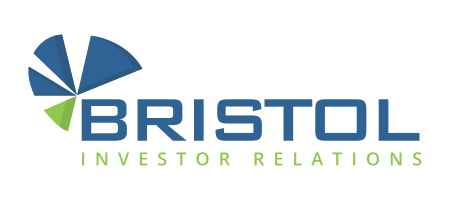The 4-1-1 on MIFID II
The 4-1-1 on MIFID II

As of January 3rd, 2018, a revamped version of the Markets in Financial Instruments Directive (Mifid II), is designed to offer greater protection for investors and inject more transparency into all asset classes, from equities to fixed income, exchange traded funds and foreign exchange. The extensive legislation, seven years in the making, already has 1.4 million paragraphs of rules, which will likely grow as regulators complete the final standards in coming months. (Yes, you read that correctly,1.4 million paragraphs!) This is a high level overview of what MIFID II is and some of the effects to the financial community globally.
Aims
- To make European markets safer, more transparent and more efficient
- To restore investor confidence following the financial crisis
- To move a significant part of over-the-counter trading to the regulated trading venues
Who it effects
Everyone – from banks, funds managers, exchanges, trading venues, high frequency traders, brokers, pension funds and retail investors
Main Powers
- More pricing transparency for off-exchange markets
- Volume caps for equity “dark pools”
- Splitting payments for analyst research and trading commission
- Tougher standards for investment products
Markets it covers
- Equities markets, fixed income, commodities, currencies, futures, exchange traded products and retail derivatives such as contracts-for-difference
The new rules cover virtually all aspects of trading within the EU. They reach across the financial services industry, from banks to institutional investors, exchanges, brokers, hedge funds and high frequency traders. For example, if a fund manager wants to buy anything that has an underlying product listed in the EU, such as an HSBC option in Hong Kong, it falls within the MifidII scope, no matter where the asset manager is based. Another instance would involve an EU based investor purchasing shares in Apple as the US group has a secondary listing in Germany.
One of the most widely spoken about aspects of the legislation involves how asset managers pay for the research they use to make investment decisions. It is a bullet to what regulators saw as a conflict of interest at the heart of trading that hurts fund manager’s clients: pension funds, ordinary shareholders and retail investors. Until now, asset managers received research, including written reports and phone calls with analysts for free, although the cost of this service was built into trading fees, which are usually paid by the fund manager’s clients. For the first time, fund managers will have to budget separately for research and trading costs, a move known as unbundling.
Under MifidII, asset managers and institutional investors will have to make payments for research, either from their own balance sheets or through new research payment accounts. (RPA’s) In line with this unbundling, companies on both sides (the buy side and sell side firms) have sought advice on both how much they should be charging for these services and what they might be willing to pay for such services. At this early stage, not many firms, estimated likely around 10-15% of firms know what they will charge or what they might be willing to pay for such services. Time will likely see the process evolve and be refined with a possible approach being some firms willing to pay for certain “al a carte services” that they pick and choose. 2018 will be an interesting and important year to see how these transitions and allocations play out and where/ how the money is spent.
‘Our research shows the seismic disruptions that many expected probably won’t materialize in the early months of 2018,’ says William Llamas, Greenwich Associates’ relationship manager and author of the new report, ‘As Mifid II looms, European fears subside. Immediate, substantial decreases will indicate to regulators and clients alike that these managers were wasteful in their research spending in prior years. While other institutions have already decided to fund research payments with RPA-based payments, about two thirds of study participants have not yet decided how they will pay for research under the new Mifid guidelines,’ says Llamas.
With so many research analysts in the industry already, it has been mentioned numerous times that a likely consolidation will take place, a streamlining of top analysts within firms and industries will emerge naturally, with the buy side gravitating towards those players and names. For research, it really will mean the best and most in-depth insight is rewarded and not just the reciting of quarterly earnings and certain predictions. Naturally as the sell side research industry contracts, the talent will look elsewhere for opportunities. (Read more about this from our previous feature, The Conundrum of Sell Side Research) A natural possible migration might be into investor relations which is likely to see something of an evolution or redefining itself for IRO’s post MifidII.
MifidII’s impact will be felt by other countries around the world and not just in Europe alone. The new rules on research payments poses a significant challenge for US brokers. The recent SEC ruling, which gives a 30-month reprieve to US banks and brokers to abide by MifidII, is an important case in point. There is a strong basis to believe the ruling will actually mean business as usual and, more long term, potentially create a narrative that MifidII will become a global standard. This means that US banks can sell research (unbundled) without having to register as investment advisors, as stated by the SEC, meaning European investors can still buy US research.
In a statement, the UK financial regulator, the Financial Conduct Authority (FCA) notes, in line with the SEC and the European Securities and Markets Authority (ESMA), the business-as-usual approach being central to the arrangement: ‘In supervising the MifidII inducements and research provisions, and cross-border practices by firms in this area, the FCA will focus on ensuring investors’ interests are advanced. Arrangements that comply with MifidII and other jurisdictions’ rules, while enabling EU firms’ continued access to research produced by US and other non-EU jurisdictions, are likely to be the best way of serving investors.
So, what does this mean for investor relations and will the effects be the same for all companies? Likely the effects will be drastically different for small and mid-cap companies versus large cap companies. Small and mid-cap companies will be tasked with getting their company known and in front of investors, often times with possibly less research coverage than the pre MifidII era. In the past many small cap firms have been very reliant on the sell side to help promote their story via research and corporate access. Post MifidII this will change, meaning that the IRO will have to be more targeted in his approach and articulate a company’s key messages and investment thesis in more concise manner. Relationships will become even more vital between the buy side and Management teams to really understand their long-term strategy, execution plans and how they measure up against peers and to evaluate if a position or investment in them would make sense. In the absence of asset managers paying for corporate access, they will likely seek out the most interesting stories for themselves.
Nobody really knows what can be expected on the first day when MifidII is implemented and what will ensue in the following weeks and months. One thing for certain though is that it will have an impact and repercussions way beyond Europe, into Asia and North America, the extent is still to be determined. One thing is for sure, the world’s financial community will be watching in anticipation and with bated breath as this new and uncertain world awaits.
Sources:
Thompson Reuters
Financial Times
Bloomberg
IR Magazine
CIRI Mifid II panel discussion
